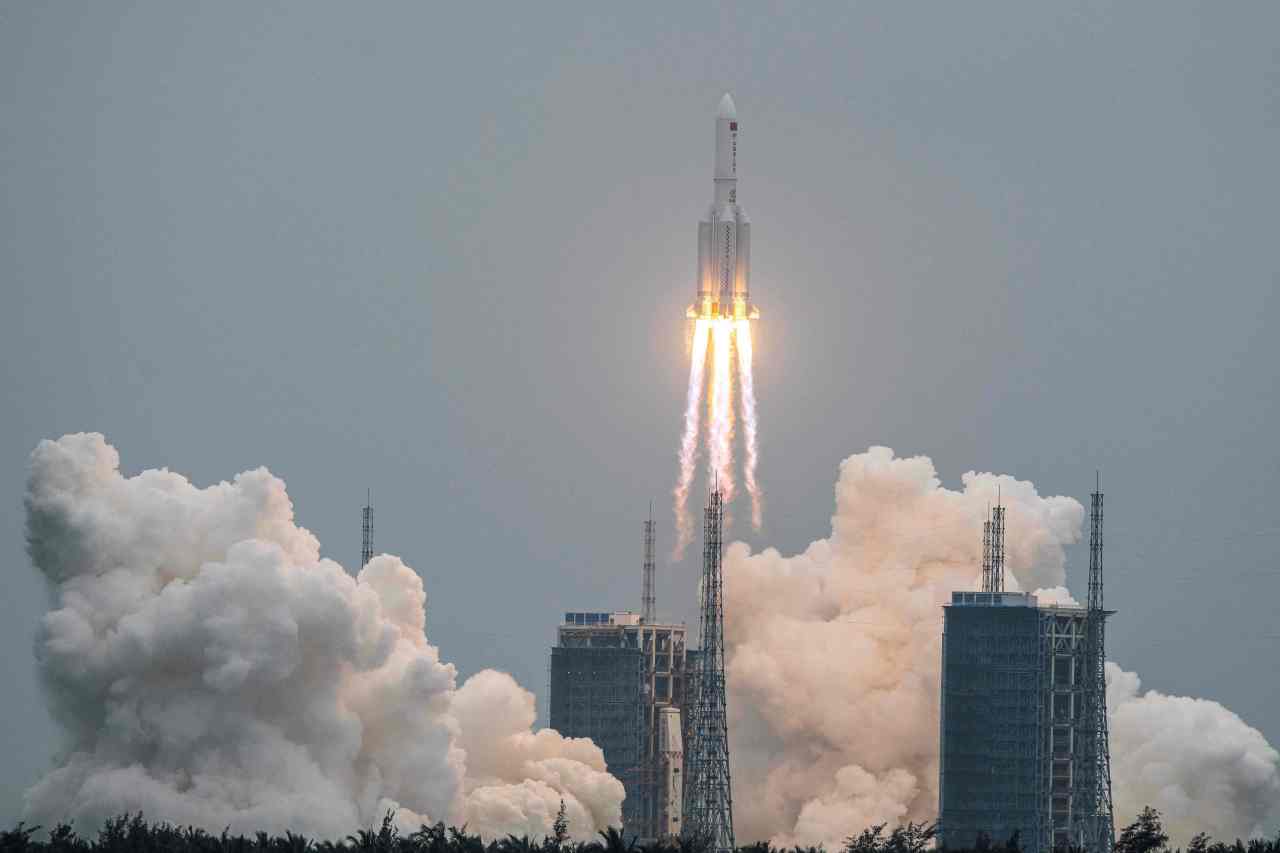 |
This file photo taken on April 29, 2021 shows a Long March 5B rocket, carrying China's Tianhe space station core module, lifting off from the Wenchang Space Launch Center in southern China's Hainan province. (AFP-Yonhap) |
BEIJING (Reuters) -- Remnants of China's biggestrocket landed in the Indian Ocean on Sunday, with the bulk ofits components destroyed upon re-entry into the Earth's atmosphere, according to Chinese state media, ending days ofspeculation over where the debris would hit.
The coordinates given by state media, citing the ChinaManned Space Engineering Office, put the point of impact in the ocean, west of the Maldives archipelago.
Debris from the Long March 5B has had some people lookingwarily skyward since shortly after it blasted off from China's Hainan island on April 29, but the China Manned Space Engineering Office said most of the debris was burnt up in theatmosphere.
State media reported parts of the rocket re-entered the atmosphere at 10:24 a.m. Beijing time (0224 GMT) and landed at alocation with the coordinates of longitude 72.47 degrees eastand latitude 2.65 degrees north.
The Long March launched last week was the second deployment of the 5B variant since its maiden flight in May 2020. Lastyear, pieces from the first Long March 5B fell on Ivory Coast,damaging several buildings. No injuries were reported.
With most of the Earth's surface covered by water, the odds of populated area on land being hit had been low, and the likelihood of injuries even lower, according to experts.
But uncertainty over the rocket's orbital decay and China'sfailure to issue stronger reassurances in the run-up to there-entry fueled anxiety.
During the rocket's flight, Harvard-based astrophysicist Jonathan McDowell told Reuters that the potential debris zonecould have been as far north as New York, Madrid or Beijing, andas far south as southern Chile and Wellington, New Zealand.
Ever since large chunks of the NASA space station Skylabfell from orbit in July 1979 and landed in Australia, most countries have sought to avoid such uncontrolled re-entries through their spacecraft design, McDowell said.
"It makes the Chinese rocket designers look lazy that they didn't address this," said McDowell, a member of the Harvard-Smithsonian Center for Astrophysics.
The Global Times, a Chinese tabloid published by the official People's Daily, dismissed as "Western hype" concerns that the rocket is "out of control" and could cause damage.
"It is common practice across the world for upper stages of rockets to burn up while reentering the atmosphere," said Wang Wenbin, a spokesman at the Chinese foreign ministry, at aregular media briefing on May 7.
"To my knowledge, the upper stage of this rocket has been deactivated, which means that most of its parts will burn up upon re-entry, making the likelihood of damage to aviation orground facilities and activities extremely low," Wang said at the time.
The rocket, which put into orbit an unmanned Tianhe modulecontaining what will become living quarters for three crew on apermanent Chinese space station, is set to be followed by 10 more missions to complete the station by 2022.
Heavy-lift Long March 5 rockets have been key to China'snear-term space ambitions - from the delivery of modules and crew of the planned space station to launches of exploratoryprobes to the Moon and even Mars.








